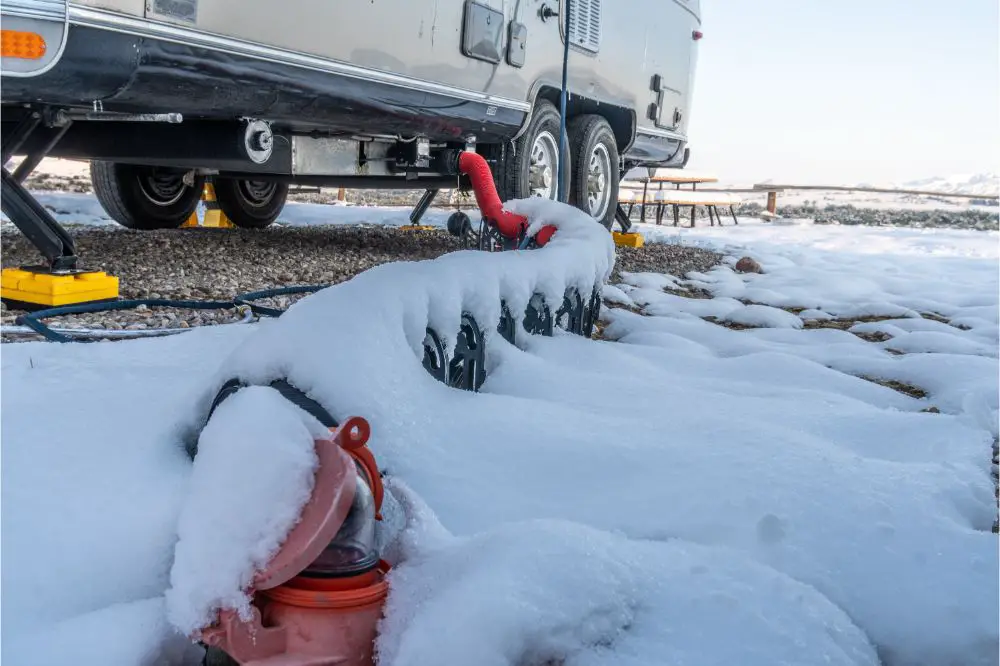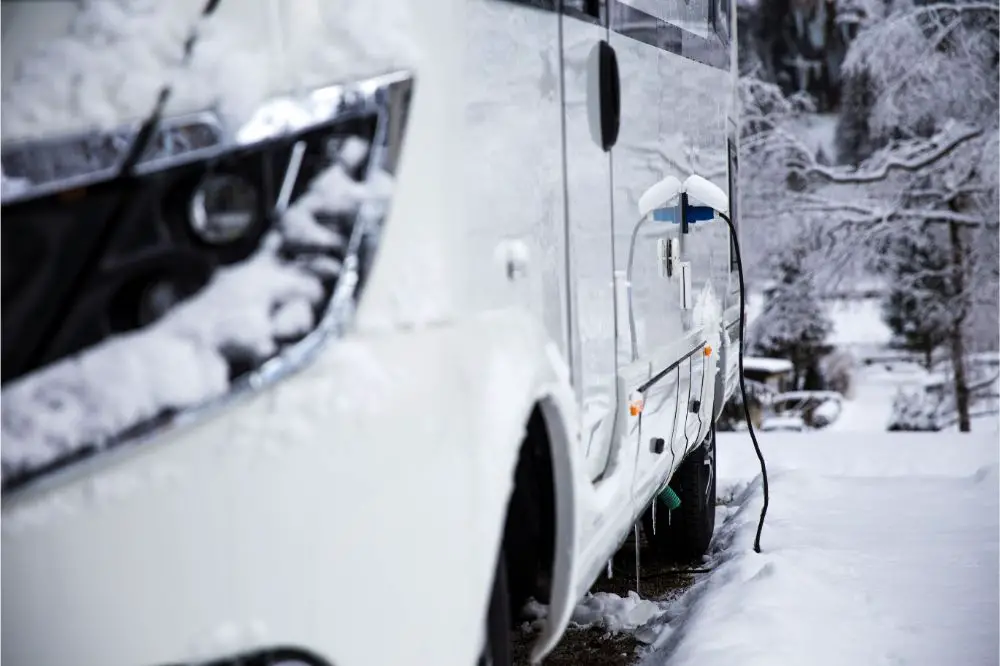Published Date: July 4, 2022
Last Updated on June 22, 2023 by Camper Front
Winter camping has always been popular among RV owners, despite the many risks it is associated with. Some hazards are more than inconvenient, however. In particular, frozen RV water pipes and filters can severely affect your RV’s water system and may cause many other unforeseen complications.
Fortunately, RV owners are a canny and resourceful bunch and have come up with plenty of ways in which you can keep your water pipes and filter from freezing when the weather goes from cold to freezing. After all, you will not encounter an external heat source in the wild.
Each of these methods is fairly simple in execution, but some will require a little bit of elbow grease and good old-fashioned labor to implement properly. Let’s take a look.
Table of Contents
Which Areas Are Most Likely to Freeze?
Aside from the water filter itself, several other important parts of your RV’s water system will require additional insulation to prevent freezing.
The first key component is the holding tanks, your RV’s primary water supply. The exact placement of your RV’s tanks will affect the likelihood of their freezing during winter. If your tanks are located outside your RV or are placed closer to the ground (as with Class As, Class Cs, and travel trailers), they are more susceptible to freezing.
Fortunately, most Class B motor homes include their tanks above the floor level. Because of this, your RV’s water system will be closer to that of your heater temperature and will be able to maintain a consistent heat level.
Your RV’s pipes are also vulnerable to freezing. While interior pipes should be kept warm from your furnace or heater, those exposed to external temperatures will need some additional insulation to prevent freezing. Because of their size, they are more vulnerable than tanks.
Lastly, your water-hookup hose and sewer discharge line should be stowed away when not in use. Water can sometimes pool at the lower ends of both, leading to significant damage and other issues. Therefore, filling up your fresh water tank in advance may be a good idea if it takes a drop to below-freezing temperatures. Disconnect the hookup hose to prevent any issues at an inopportune time.

How Can You Prevent Freezing?
The RV community has an incredible breadth of knowledge about proper maintenance and care for your mobile home. As such, there are plenty of ways to keep your water supply, hoses, and connection from freezing in the cold of winter. For the purposes of this post, however, we will be looking at some of the best and most effective. They are:
- Installing an RV skirt
- Purchasing pipe-heating cables
- Removing the water-filter
Of course, you do not need to adopt all of these solutions. However, implementing one or two will add a much-needed layer of warmth and insulation.
Install an RV Skirting
RV skirting (also called wind skirting) generally works best if you plan on remaining stationary for an extended period of time. RV skirts are – in essence – removable “walls” which are installed at the base of your RV and which extend all the way to the ground. This prevents wind and colder elements from drafting up through your RV’s floor and increases your RV’s heat retention.
In this way, the ambient temperatures from your RV can keep your water tanks and other crucial components from freezing.
RV skirting comes in a variety of materials, though some are much more effective than others. The three most common skirting materials are:
- Plywood – Plywood was once the skirting material of choice for many campers. However, plywood skirting is very difficult to cut, fold, and store, making this an inconvenient option for campers who regularly move around.
- Vinyl – Nowadays, many RV-owners swear by vinyl skirting due to its immense longevity and ease of use. While it is not quite as durable as plywood, vinyl skirting is far more convenient for frequent movers.
- Tarp – Tarp can be a cheap and effective solution under moderate conditions. However, tarp skirting is prone to tearing and blocks heat loss much less efficiently than other, more solid solutions.
Purchase Pipe-Heating Cables
While RV skirting is a legitimate solution, the effort of installing and reinstalling your skirting can grow tiring after a while. Fortunately, pipe-heating cables are always available for purchase and will serve to keep your pipes, water hoses, and even your filter warm even as the cold rages on.
Pipe-heating cables can also be attached to your RV’s fresh water hose. These aftermarket heating elements eliminate the need to worry about freezing, as they automatically turn your hoses into heated hoses and your pipes into heated pipes, all without requiring any effort from you whatsoever.
That being said, any additional insulation around the water pipe will be greatly beneficial.
Remove the Filter
When you are finally ready to break camp, removing your water filter as soon as possible and storing it safely is always a good idea. Always let the excess water drain from the filter before attaching the caps.
If you plan to keep your water filter inside the RV with you, let it thaw out by purchasing a heat lamp or heat gun. Then, when it has warmed up enough, place it in your RV’s utility compartment for later use.
Conclusion
And there you have it – some of the best methods on how to keep RV water filter from freezing in the winter. There are plenty of ways to prevent your RV’s water system from freezing over, including several alternative methods that we may cover at a later date. For now, however, be prepared for a hefty investment of time to make sure that all of your RV’s water system components are properly insulated and protected from the elements.
If you are unsure exactly how cold the weather may get, consider investing in a degree sensor or thermometer to accurately gauge the temperature at any given moment. For now, though, be sure to implement these ideas before your next camping trip.

